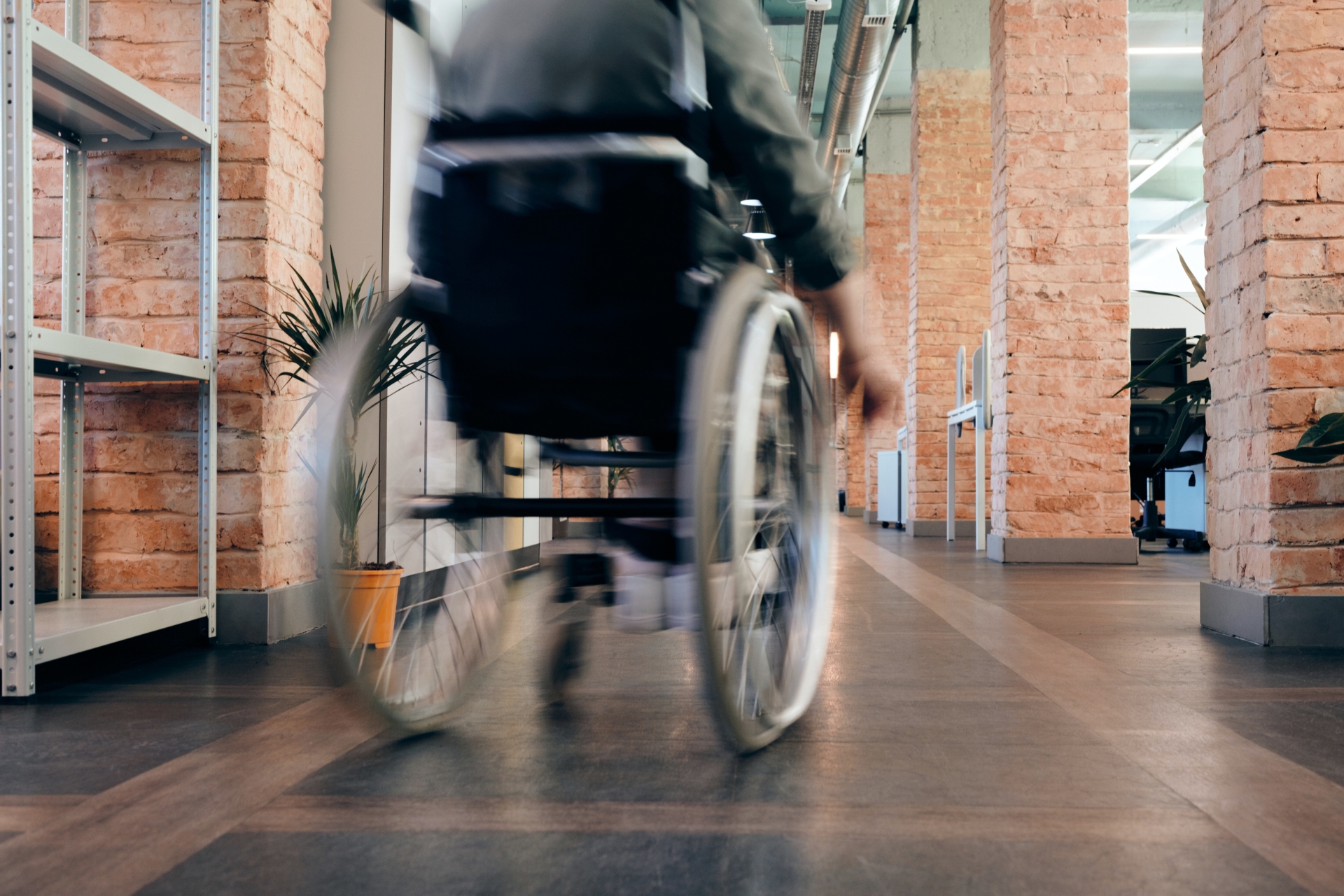April Reed remembers what it used to be like before the Americans with Disabilities Act was passed.
Reed remembers her father, who wears hearing aids, telling her how he was turned away from a job interview. She remembers a colleague hoping every day that the bus would be wheelchair-accessible when it came by, so she could go about her day. She remembers another colleague with a master’s degree but an obvious physical disability that cost him his job.
The ADA, signed 30 years ago Sunday, changed all that.
“That’s what the ADA did,” said Reed, the vice president of advocacy at Ability360. “It released people from some of these limitations and gave them the basis of civil rights to go into a job interview and have those protections or expect for a bus to roll up and be accessible.”
But the act did more than force physical and legal protections – in the words of one advocate, it forced Americans to see people with disabilities “as fully human” for the first time.
Despite the gains of the last 30 years, however, advocates say there is still work to improve what one called a “baby law” if the country wants to fully guarantee the rights of people with disabilities.
“Every day there are court cases that further expand … the ADA so that people understand their rights and then employers and public accommodations understand their responsibilities,” said J.J Rico, CEO of the Arizona Center for Disability Law.
President George H.W. Bush signed the ADA into law on July 26, 1990. It prohibited discrimination in housing, employment, public accommodations, transportation and more for the disabled community.
The law defines a person with a disability as someone who has physical or mental impairment “that substantially limits one or more major life activities.”
The Census Bureau estimates that 12.6% of Americans were categorized as having a disability in 2018, the latest year for which numbers were available, while the rate in Arizona was 13.3%.
Jon Meyers, the executive director of the Arc of Arizona, said that before the law was passed, people with disabilities were considered an afterthought and accommodating them was considered “too much work.” The act “completely remade the world,” at least in terms of accommodations, he said.
“I would say we as a society are now viewing individuals with disabilities, Arizonans with disabilities, as fully human – as people who deserve the respect and the equal level of access to public accommodations and to public benefits that everybody else deserves,” Meyers said.
It’s been a struggle, but he said the “awareness and the advocacy have snowballed … over the last several decades, and will continue to snowball.”
“There is no fairy dust that we can sprinkle that’s going to change everybody’s attitude immediately but we’ve come so far,” Meyers said. “We’re going to start seeing what each individual needs and how we can meet those needs to help them become better employed, better educated, and have more opportunity for inclusion in their communities.”
But hurdles remain. Meyers noted that in addition to providing people with intellectual and developmental disabilities with services, the Arc of Arizona also actively works with state legislators to tackle laws and bills that expand, or defend, the purpose of the ADA.
Legislators like Arizona Rep. Jennifer Longdon, D-Phoenix, who uses a wheelchair.
“I still encounter barriers on a daily basis – barriers that you would think, 30 years post-ADA, wouldn’t exist,” Longdon said. “So it’s going to be a continued fight to bring awareness and visibility of this particular community to the typically abled community.”
Longdon, who was paralyzed in a random drive-by shooting in 2004, has been working on bills focusing on people with disabilities since she was elected to the House in 2018. She sees it as part of the larger struggle for civil rights.
“Civil rights have always been taken – by women, by African Americans, by Native Americans, by people with disabilities, by the LGBTQ community,” Longdon said. “None of these communities have just been given rights. They had to speak up, and demand them and take them.”
And the community faces new challenges today that could not have been dreamed of when the act was passed in 1990 – like access to the internet, a problem that has been highlighted by the COVID-19 pandemic.
As society has transitioned to remote work and online shopping, the challenges that people with disabilities face with utilizing the internet have become obvious. What’s not obvious, Rico said, is how far the ADA goes to accommodations for online services.
“We’re talking about a pandemic that has been restricting us to our homes,” Rico said. “So how do we shop? We use the internet. We have Instacart and other delivery services. And so I think the ADA has to clearly apply to websites.”
Rico said the pandemic has also put a damper on what should have been in-person 30th anniversary celebrations for the ADA, but he has been pleased to see virtual celebrations.
“I would have loved to see people with disabilities out celebrating the progress and sharing the stories out in public,” Rico said. “But I’m hoping that some of these virtual ADA celebrations get attention so that people with disabilities can share their stories.”
Reed sees the fact that people have taken to social media with hashtags and pictures to share their stories for the 30th anniversary is more proof of the support for the ADA.
“Just those simple signs – it really does remind you of what the ADA has done,” she said.
“And again, we are not done. There is still much work to do,” Reed said. “But certainly being grateful for where we are, knowing this is the foundation, this is the basis for what work we will do in the future.”
Story by Lisa Diethelm, Cronkite News




